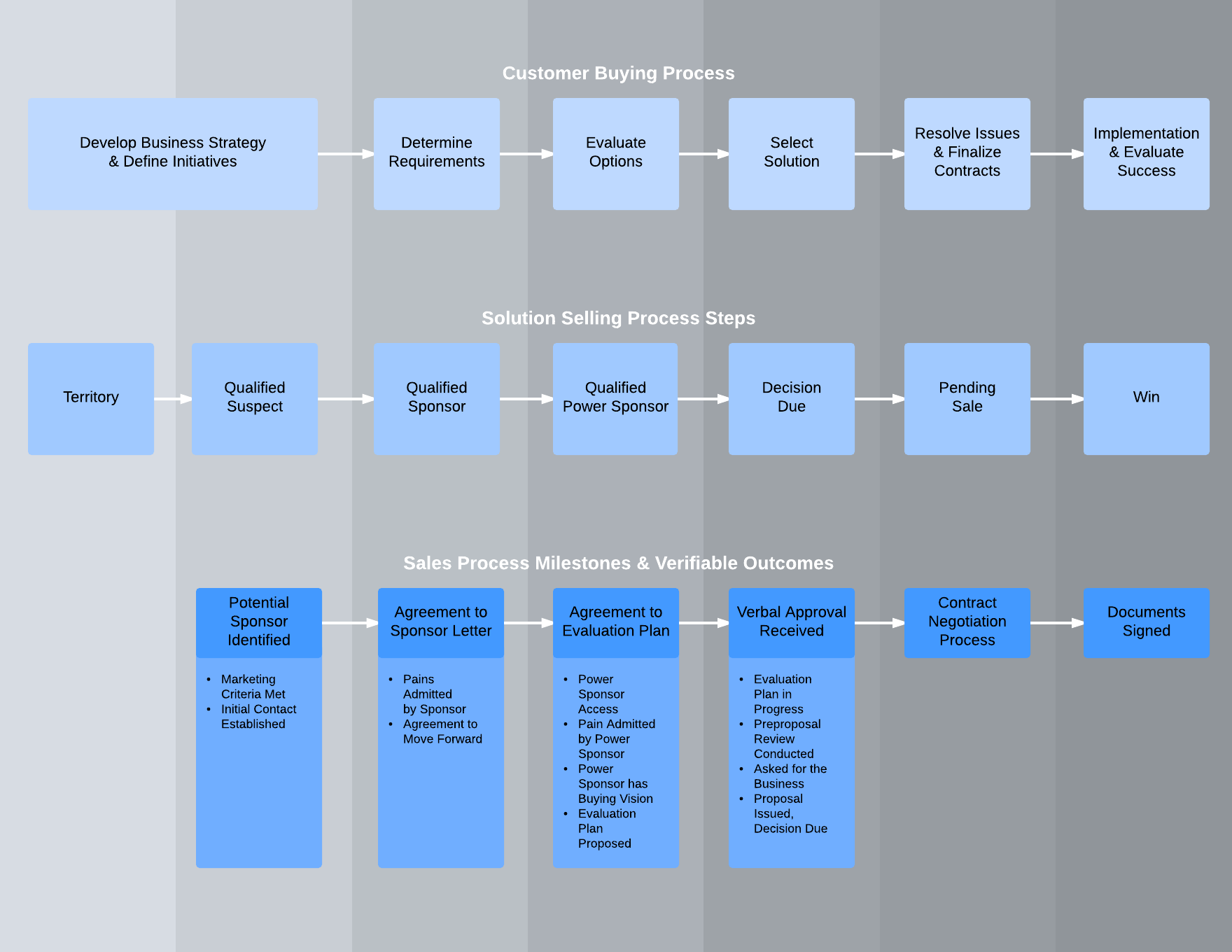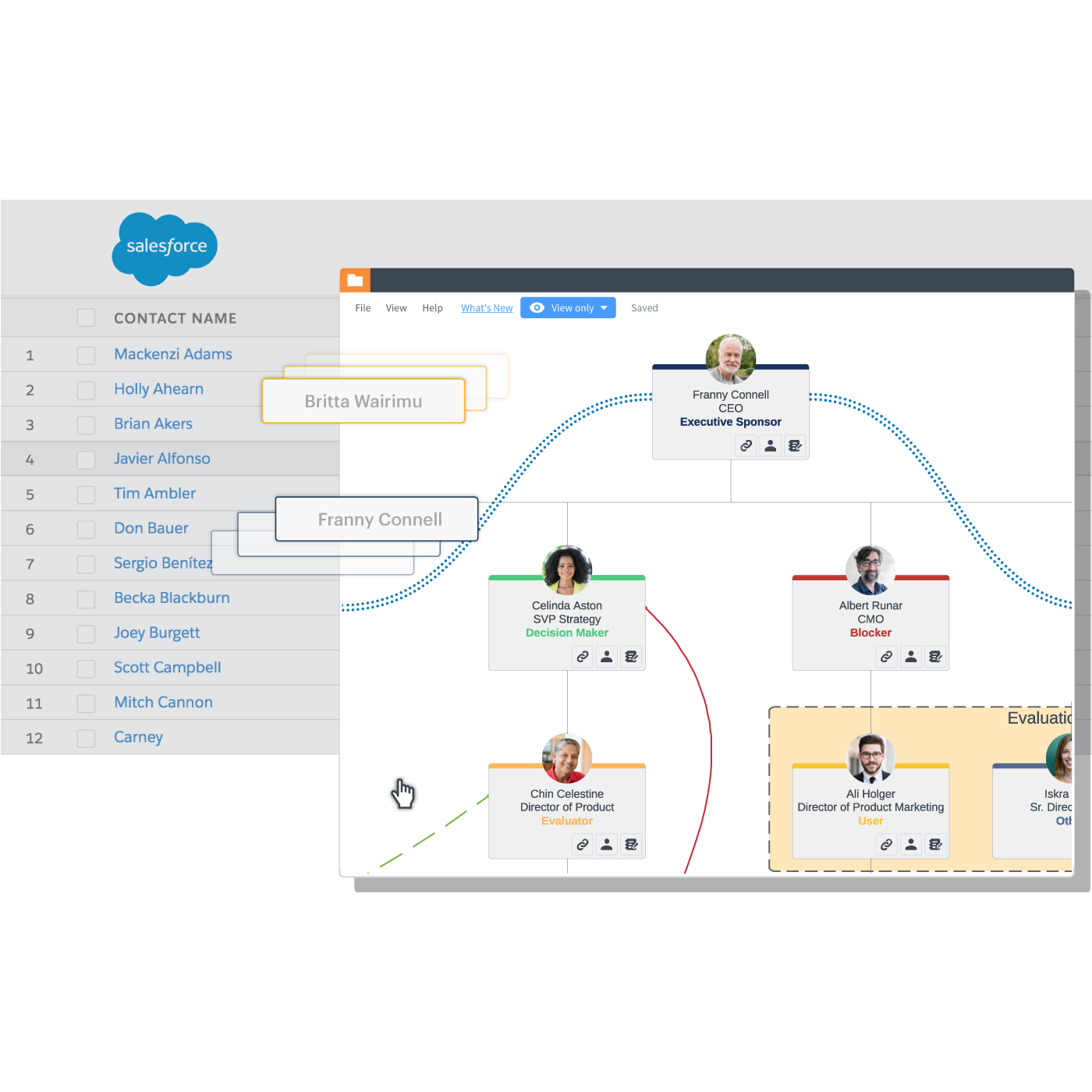Based on research from HubSpot, only 3% of buyers trust sales representatives. And you stand no chance of reversing that statistic if you deliver a run-of-the-mill pitch that shows prospects you care more about earning money than finding a solution to their problems.
Try the solution selling process. By presenting an answer to a problem or issues, instead of simply promoting your product, you’ll acquire new customers and keep them satisfied.

What is solution selling?
The solution selling process is exactly what it sounds like: selling a customer on a solution (your business or product) that helps them overcome a problem.
A solution selling process differs from a more traditional sales process because, instead of just pushing a product, the seller focuses on a specific issue or problem the customer faces and suggests corresponding services or products to solve that issue.
Steps in the solution selling process
Adopting the solution selling process for your business won’t require an entire overhaul. You can easily reframe your sales pitch to focus less on what your product does and more on how it can solve or alleviate an issue. Just think of yourself as less of a salesperson and more of a consultant.
Use Lucidchart to ease the transition to solution selling. In our platform, you can create a sales process flowchart or make changes to an existing sales process.
Follow these six steps of the sales process reframed for the solution selling process:
1. Prepare
This step follows the traditional sales process, with just a slight change of direction. Instead of researching who your potential customer is, you need to research what your potential client’s biggest problem or issue might be. As you prepare for your first sales call or point of contact, research your prospective customer’s history and try to identify what roadblocks they face.
2. Diagnose
Use the research you�’ve done in the previous step to further understand what roadblocks the client faces. Ask open-ended questions that require the client to address weaknesses in their current process. As this line of questioning unfolds, you should take notes on where you see your product or service fitting into their business.
3. Qualify
Use a set of questions or criteria to determine whether your lead is A) interested in the solution you’re offering and B) in a position to make a decision, whether that’s making a purchase, starting a trial, or agreeing to an additional sales call.
4. Educate
Here is where the real difference between the traditional sales process and the solution selling process becomes apparent. You need to give the client tangible reasons for not only why their business needs your service but also how their business will benefit. Focus on elements like these:
- Return on Investment (ROI)
- Reduced operation costs
- Percentage of savings year-over-year
You might even consider preparing an example or a case study of a current or past client to demonstrate your solution in action. With Lucidchart, you can demonstrate the value of your product or service in a simple, visual way or even compare the prospect’s current process with an improved process using your product. To see an example, read our case study with Okta.
5. Solve
Mirror the language and style of communicating that the client has used so far to present your product as the solution to the specific pain points they discussed in step 2. In addition to cementing the effectiveness of your product or service, look for similarities in your new client and existing clients, and bring along any relevant case studies or examples. This step is about really driving home the solution you bring to the table.
6. Close
Listen to any remaining objections, counter those objections with benefit-driven responses, and move on to the close or next step. Take a cue from your potential client and decide whether the situation calls for a hard, direct close or a softer, more informal close. Always bring it back to why this customer needs your service.
Try out the solution selling process
The sales process you’ve known and used for years doesn’t need to be thrown out, but you may want to shift your approach a bit. With some slight tweaking, you can refocus your sales process to include a solution selling process.
The solution selling methodology is about reframing the way a prospective client thinks about your product. Don’t shy away from a difficult discussion of pain points—embrace it! Use these hang-ups to your advantage to better position your service as the answer to their prayers. Give the client a glimpse into how easy their day-to-day operations could be if they adopted your product.

Sales professionals save 4.9 hours a week when they use Lucidchart. Optimize your sales process now.
Sign upAbout Lucidchart
Lucidchart, a cloud-based intelligent diagramming application, is a core component of Lucid Software's Visual Collaboration Suite. This intuitive, cloud-based solution empowers teams to collaborate in real-time to build flowcharts, mockups, UML diagrams, customer journey maps, and more. Lucidchart propels teams forward to build the future faster. Lucid is proud to serve top businesses around the world, including customers such as Google, GE, and NBC Universal, and 99% of the Fortune 500. Lucid partners with industry leaders, including Google, Atlassian, and Microsoft. Since its founding, Lucid has received numerous awards for its products, business, and workplace culture. For more information, visit lucidchart.com.

